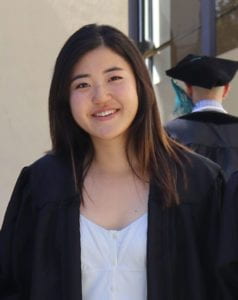The Flight to Occupational Therapy and Adaptive Fashion

My fascination with the term adapt came to light during an assistive technology course I took in my Master of Occupational Therapy program. I created a 3-D printed cardholder, an adaptive switch toy, and an adaptive spa kit. During the process of building these items, I thought to myself, “how great is it that the smallest alteration of a device makes all the difference for someone with a disability?”. Then, after becoming a licensed occupational therapist, I became eager to find my niche in the versatile field of occupational therapy. Although I knew that assistive technology was my passion, I felt that there was a vast pool of information that I was still not comfortable with when applied clinically. I struggled to determine which component of assistive technology piqued my interest and decided to pursue a clinical doctorate to learn more about the research behind assistive technology. I wanted to know if there is a need for certain types of assistive technology and how an occupational therapist can use evidence-based, holistic techniques to create these types of technology for their clients.
Subsequently, I discovered adaptive fashion through the plethora of resources available in New York University’s Post-Professional Doctor of Occupational Therapy program. I was confident that I wanted to develop a product related to the occupation of dressing. The more research I conducted, the more my desire to create a centralized resource for practitioners, caregivers, and individuals with disabilities to easily access adaptive apparel grew. I began to notice a trend in the perspectives of the adaptive apparel industry: either a lack of awareness or feelings of being overwhelmed. As an occupational therapist with experience in both adult and pediatric rehabilitation, I wanted to utilize my knowledge to help individuals across the lifespan. My vision was, and still is, to create a customized and straightforward experience for shoppers seeking adaptive apparel. To do so, I realized that it was essential to build a foundation of knowledge of occupational therapists’ roles in selecting and creating assistive technology. Along the way, I learned that adaptive fashion could be implemented across most occupations an individual with a disability encounters.
As somewhat of a nomadic therapist, I have lived in numerous cities within the midwest, west coast, and east coast. My curiosity about different cities and demographics increased as my desire to enrich my expertise as an occupational therapist grew. The pursuit of my doctoral degree with an emphasis on adaptive fashion resembles the process of traveling via airplane, where the contents of my degree are encased in my suitcase. The identification of the needs of adaptive apparel represents the itinerary for the trip. The advancement of my competence project represents the sequence of taking off. The dissemination of the obtained knowledge represents the landing and arrival at the destination. Although there was turbulence along the ride, the destination is what made the educational journey worth it.
Professional Goals
Goal 1: Demonstrate an advanced understanding of the needs of adaptive apparel from the perspectives of individuals with disabilities and caregivers to build a framework of knowledge.
AOTA Standards of Continuing Competence: (1) Knowledge, (2) Critical Reasoning, (3) Interpersonal Skills, (4) Performance Skills
Goal 2: Develop centralized resources for individuals with disabilities, caregivers, and healthcare professionals on the available types of adaptive fashion to improve ease of access and quality of life in individuals with disabilities.
AOTA Standards of Continuing Competence: (1) Knowledge, (2) Critical Reasoning, (3) Interpersonal Skills, (4) Performance Skills
Goal 3: Implement the knowledge of occupational therapy and adaptive fashion in order to promote adaptive design and advocacy as described in the literature.
AOTA Standards of Continuing Competence: (1) Knowledge, (2) Critical Reasoning, (3) Interpersonal Skills, (4) Performance Skills
American Occupational Therapy Association. (2015). Standards for continuing competence. American Journal of Occupational Therapy, 69, 6913410055. https://doi.org/10.5014/ajot.2015.696S16